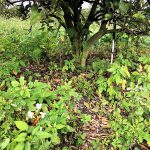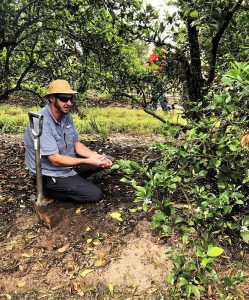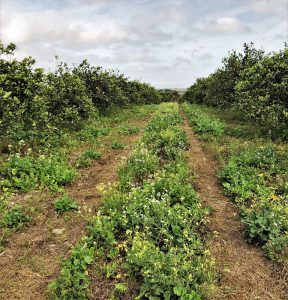
Over the years, farmers have tried many tactics to improve their crop yields, including fertilizer, pesticides, and herbicides. All these methods are costly and must be applied in very specific amounts to optimize growth, which sometimes is very challenging. What if these steps could be minimized or avoided completely, and producing healthy crops could be as easy as watching the grass grow? Well, farmers will be happy to know improving soil health can accomplish just that!
Soil Health

Soil health is much more than the ideal level of nutrients; it encompasses porosity, microorganisms, moisture content, and much more. The US Department of Agriculture/Natural Resources Conservation Service (USDA/NRCS) defines soil health as the continued capacity of soil to function as a vital living ecosystem that sustains plants, animals, and humans (1). When we think of health, typically the ground beneath our feet doesn’t come to mind. Only living things can be healthy, right?
In all actuality, soil is composed of significantly more than just organic matter and sand – it’s flourishing with life! Microorganisms such as bacteria and fungi break down waste and residue to create organic matter; this organic matter is vital to the success of crops above. These microorganisms are ingested by nematodes and insects, who are then consumed by larger animals like moles and birds. This illustrates the complex food web that makes up our soils and the vitality of the microorganisms to the health of this web.
If agricultural producers till the ground or apply too much fertilizer or pesticide, these microorganisms can be disturbed or killed, which is detrimental to organic matter production as well as the cycle of life that comes from it. The producer must then apply more fertilizer, which is expensive and easily lost from the soil. Without the bacteria and fungi available to create organic material, fertilizer and manure applied cannot be contained; this causes nutrient leaching into groundwater as well as wasted product, and therefore money, for the farmer. Luckily, there is a simple, cost effective way to harness the benefits of microorganisms – cover crops!
Cover Crops

Cover crops, defined as grasses, legumes, and forbs planted for seasonal vegetative cover (2), provide the necessary root system for microorganisms to thrive. Cover crops themselves can add nutrients to the soil; for example, legumes are known to have nodules where bacteria fix and exchange nitrogen for carbon, creating a mutualistic relationship between the bacteria and plant. When terminated (crimped down and killed using specialized equipment), cover crops will decompose and provide organic matter and substrate to the current soil, creating an extremely nutrient rich soil for planting new, productive crops (3).
Best Management Practices (BMPs) are designed to preserve and protect Florida’s water resources while maintaining agricultural production (4). Since cover crops help to conserve water, nitrogen, and phosphorous for use in future cropping seasons (3), UF has designated them as a BMP. Additionally, the USDA/NRCS may provide financial or technical assistance to qualified agricultural producers to plant these crops. For more information on cover crops, or if you would like to know about the USDA/NRCS programs, visit the Florida NRCS Environmental Quality Incentives Program website.
For more information, please email Christine Russo at christine.russo@usda.gov
Sources
1 – https://www.nrcs.usda.gov/wps/portal/nrcs/main/soils/health/
2 – https://efotg.sc.egov.usda.gov/references/public/FL/FL340.pdf
3 – https://blogs.ifas.ufl.edu/clue/2020/04/14/cover-crops-help-growers-meet-bmp-goals/
4 – https://bmp.ifas.ufl.edu/about-bmps/
 1
1
